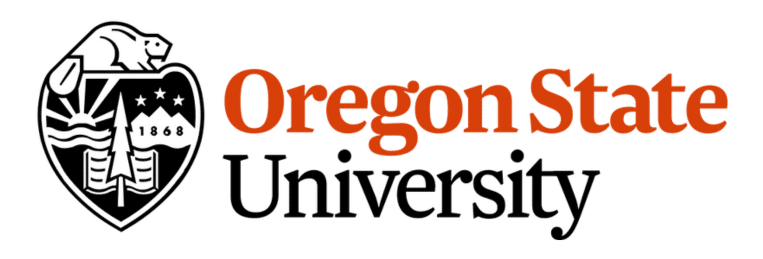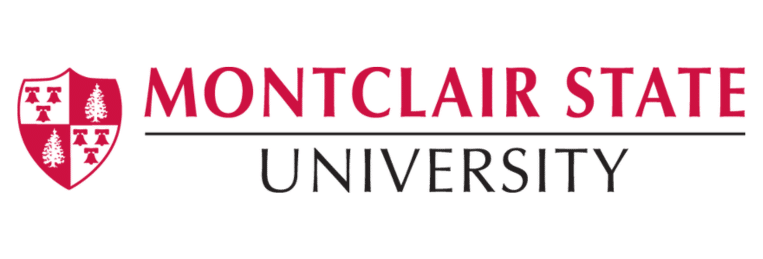General overview of Studying in the United States
The United States, with its diverse and globally renowned education system, has always attracted students from around the world. This country is famous not only for its leading universities but also for its rich culture, scientific achievements, and strong economy.
General Information
- Country name: America / United States
- Capital: Washington, D.C.
- Area: 9,833,520 km²
- Population: 308,586,000 (2010)
- Currency: United States Dollar ($) (USD)
- Time zone: GMT-5 to GMT-10 – Daylight Saving Time: GMT-4 to GMT-10
- Language: American English (US English)
Geography and Climate
The contiguous United States stretches from the Atlantic Ocean to the Pacific Ocean and from Canada to Mexico and the Gulf of Mexico. Alaska is the largest state by area, bordering the Pacific Ocean and the Arctic Ocean, and is separated from the contiguous United States by Canada. Hawaii consists of a chain of islands located in the Pacific Ocean.
Due to its vast size and diverse landscapes, the United States encompasses nearly every type of climate. A temperate climate prevails in most regions. A tropical climate is found in Hawaii and southern Florida, an Arctic climate in Alaska, and a semi-arid climate in the Great Plains west of the 100th meridian. The Southwest experiences desert climates, coastal California has a Mediterranean climate, and the Great Basin is arid. Severe weather is relatively uncommon.
Culture, society, and living environment in the U.S.
The United States is one of the most ethnically diverse countries in the world, shaped by waves of immigration from many nations. Despite this diversity, the U.S. is the oldest existing federal republic, demonstrating a safe country with a remarkably stable political system. This makes it an ideal environment for studying and building knowledge for the future.
Renowned for its friendliness, the United States warmly welcomes international students into its universities. Campus facilities include state-of-the-art laboratories, well-equipped classrooms, and modern amenities for students. Living on campus offers the opportunity to engage in various sports and enjoy recreational activities, making life in the U.S. both convenient and enjoyable. Having hosted millions of international students, American institutions understand students’ needs and maintain local support networks to help you feel truly welcomed.
If you are curious about American cuisine, it is worth noting that wheat is the primary grain used. Traditional American cooking features ingredients such as turkey, white-tailed deer, potatoes, sweet potatoes, corn, and pumpkin. Iconic American dishes include apple pie, pizza, hamburgers, and hot dogs.
Regarding religion, the U.S. government does not regulate citizens’ beliefs. Approximately 75% of Americans identify as Christians, while the remainder follow other faiths such as Judaism, Islam, Buddhism, Hinduism, and more.
The U.S. Economy
The United States has a capitalist mixed economy, driven by abundant natural resources, well-developed infrastructure, and high productivity. The country’s Gross Domestic Product (GDP) accounts for 20% of global output.
It is remarkable that the U.S. economy continues to dominate the world. Although Americans comprise only about 4.5% of the global population, the country produces one-fifth of the world’s GDP. In terms of U.S. Trust’s calculations in U.S. dollars, the American economy is nearly twice the size of China’s.
Moreover, the U.S. is among the few developed countries whose real GDP surpassed pre-financial crisis levels by 2008.
The U.S. is also world-renowned for countless iconic tourist attractions. When you visit this country, you shouldn’t miss these famous destinations:
- Statue of Liberty
A gift from France to the United States commemorating the 100th anniversary of American independence, the Statue of Liberty is the most famous landmark in New York City. In 1984, it was recognized as a UNESCO World Heritage Site.
- National Gallery of Art
This is one of the premier art museums in the U.S., located in Washington, D.C. It houses thousands of works of American painting, sculpture, and photography.
- Rushmore Mount
In 1941, sculptor Gutzon Borglum completed the monument depicting the faces of four American presidents: George Washington, Thomas Jefferson, Theodore Roosevelt, and Abraham Lincoln.
- Grand Canyon National Park
Grand Canyon National Park in Arizona is home to spectacular cliffs carved by the Colorado River and powerful winds. Each year, about 5 million tourists visit this iconic canyon.
- Everglades National Park
The largest national park in the United States, it was established in 1934 to protect the unique ecosystem in the Kissimmee river area. It was designated a world biosphere reserve on October 26, 1976 and a world heritage site on October 24, 1979.
- Hawaii
Traveling to Hawaii allows you to experience the beauty of nature and the warmth of the locals. You can admire some of the world’s most beautiful beaches and other natural wonders. Hawaii is also famous for its laid-back, peaceful vibe. Throughout the winter, it draws countless visitors. While in Hawaii, don’t miss landmarks like Kilauea Volcano, Waipio Valley, Puukohola Heiau National Historic Site, and the skiing slopes of Mauna Kea.
- Yosemite National Park
Located in the western Sierra Nevada mountains, Yosemite is one of America’s most renowned national parks. The Yosemite Valley is famous worldwide for its stunning cliffs and waterfalls. Every year, over 4 million people explore this natural wonder, enjoying a range of activities such as hiking, horseback riding, skiing, camping, cycling, and trekking.
The American Education System
The American education system is widely recognized around the globe, which is why the United States has long been regarded as one of the most reputable and prestigious destinations for international students. It is often referred to as an educational powerhouse admired by many nations.
One of the key reasons why international students are able to thrive after graduating from American universities is the country’s emphasis on a liberal arts education. This approach does not restrict you to a single, narrowly defined field of study but instead encourages you to explore a broad range of disciplines such as natural sciences, philosophy, history, and the arts.
The great advantage of a liberal arts education is that it equips you with a diverse toolkit for your future, allowing you to design your career path more flexibly. This approach helps you develop into a well-rounded, mature, and accomplished individual. You will be prepared to excel not only in specialized fields but also to transition successfully into other areas of work if you wish to broaden your horizons.
You may choose to become a manager, launch your own business, or pursue any passion that inspires you. A liberal arts education opens up countless possibilities for your future.
Types of Higher Education Institutions in the U.S.
- Public Colleges and Universities
Public colleges and universities receive funding and support from state or local governments. Every state in the U.S. has at least one public university and many public colleges. These schools often offer a wide range of programs and are known for providing high-quality education at a more affordable cost.
- Private Colleges and Universities
Private colleges and universities are independently funded and operated. Tuition at private schools is usually higher than at public institutions, and many private colleges are smaller in size.
Some private colleges are affiliated with religious organizations and may prefer to admit students who share the same faith. In addition, there are private schools that only accept male or female students.
- Community Colleges
Community colleges offer two-year programs that award Associate degrees and certificates. Generally, there are two main types of programs: - Transfer Programs: Designed for students who plan to continue their studies at a four-year college or university to earn a Bachelor’s degree. Popular degrees include Associate of Arts (AA) and Associate of Science (AS). - Career and Technical Programs: These programs provide training for specific careers and help students enter the workforce directly after graduation.
Most students who complete a community college program will transfer to a four-year institution and just spend two more years to finish their Bachelor’s degree.
- Technology Institutes
Technology institutes are four-year schools that focus on science, engineering, and technology. Some institutes also offer graduate programs, Master’s degrees, and specialized short-term courses.
The Structure of the U.S. Education System
The American education system features various structures that are established at the state level. For most children, mandatory schooling begins around the age of 5 or 6 and continues for a total of 12 consecutive years. Education is compulsory for all students until at least the age of 16 in every state, although some states require students to remain in formal education until they turn 18.
Typically, preschool—often referred to as kindergarten or pre-kindergarten—is available for children starting at around 3-5 years old. Kindergarten is considered the first year of compulsory education. After kindergarten, schooling continues through 12th grade. This 12-year journey is commonly structured into elementary school, middle school (also called junior high), and high school.
Elementary Education
Around the age of 6 (depending on state laws), children in the United States are required to begin elementary school. This stage of education is offered free of charge. Schools are typically assigned based on the family’s residential address.
Elementary school usually lasts 5-6 grades, starting from kindergarten. Students progress to higher grades as they meet academic requirements. If a student does not meet the standards, they may be required to repeat a grade. The curriculum is set at the state and district level, covering fundamental skills such as mathematics, reading, physical education, and language in some cases.
Middle School
After elementary education, each state implements its own structure for middle school. Generally, middle school in the U.S. begins when students are about 11 or 12 years old and lasts three years. Middle school is also tuition-free and includes both core and elective subjects. The curriculum at this level typically features mathematics, science, English language arts, social studies, arts, and physical education.
High School
High school in the U.S. usually starts when students are 15 or 16 years old and continues until they are around 18. Although some states allow students to leave school earlier with parental consent. Core subjects are mandatory for all students, while elective courses can be chosen to create a full schedule.
College and University Programs
After completing high school, students may advance to community colleges or universities. These institutions award either two-year degrees (commonly called associate degrees) or four-year degrees (bachelor’s degrees) in specific majors.
In most colleges that offer four-year programs, students may be admitted without declaring a major immediately. All students are required to choose (or declare) a major by their second year of study. Those who complete a two-year associate program can continue at four-year universities to earn a bachelor’s degree.
Graduate Programs
After completing a bachelor’s degree, students can pursue graduate programs to obtain advanced academic qualifications in a specialized field. These programs typically lead to a master’s degree or other postgraduate certifications.
Students are usually eligible to enter a master’s program if they already hold a bachelor’s degree in a closely related discipline. Besides the most popular programs is the Master of Business Administration (MBA). In the United States, there are generally two main types of master’s programs: research-based and coursework-based. Depending on your goals, you can select the program that best aligns with your aspirations.
After earning a master’s degree in the U.S., if you wish to further deepen your academic expertise, you can continue into a doctoral program (PhD). Completing a doctorate often requires between 3-6 years. This timeline varies depending on the scope of your research and your dissertation progress.
A dissertation is an in-depth, independent research project that must be completed to earn the degree. It is almost always a requirement for PhD candidates and, in some cases, may also be required for master’s students depending on the university.
Requirements and Estimated costs for Studying in the U.S. in 2024
Requirements for Studying in the U.S. in 2024
- An academic performance with a GPA of 6.5/10 or higher.
- An English proficiency certificate with an IELTS score of 5.5 or above. (If you do not yet have an English certificate, you can still apply for English preparatory courses in the U.S.)
- Sufficient financial resources to cover all expenses during your studies.
Overall, the entry requirements for studying in the U.S. are not overly strict. So don’t worry too much about facing high pressure.
How much does it cost to study in the U.S. in 2024?
| Education Level | Tuition Fees |
| Private High School | 28,500 USD per year |
| Public Community College | 8,614 USD per year |
| Public University | 35,000 – 45,000 USD per year |
| Private University | 65,000 – 75,000 USD per year |
| Master’s Program | Approximately 20,000 – 35,000 USD per year |
The estimated annual cost for an international student in the U.S. ranges from $10,000 to $12,000 per year. On average, you should expect to spend about $700 to $1,000 per month, this budget typically covers tuition fees, housing, transportation, and daily expenses. Additional expenses include textbooks, suitable clothing for different seasons, and entertainment costs.
The total cost of studying in the U.S. each year depends greatly on your individual choices. Costs will vary depending on the state, your chosen program, and the institution you attend in 2024.
Conclusion
In conclusion, studying in the United States offers access to a world-renowned, high-quality education system. Students benefit from attractive learning and career opportunities, as well as a diverse culture and breathtaking natural landscapes. The U.S. provides a wide range of academic options, from elementary school to undergraduate and postgraduate programs, along with financial support and a reliable visa process. Additionally, the prospects of working after graduation and settling in the U.S. are major advantages that draw international students from around the world. Experiencing life and the unique culture in America is something every student here will cherish.
For more detailed information about studying in the United States, please contact PASSEDU for free consultation and support. Wishing you great success! PASSEDU để được tư vấn và giải đáp thắc mắc miễn phí nhé! Chúc các bạn thành công!















